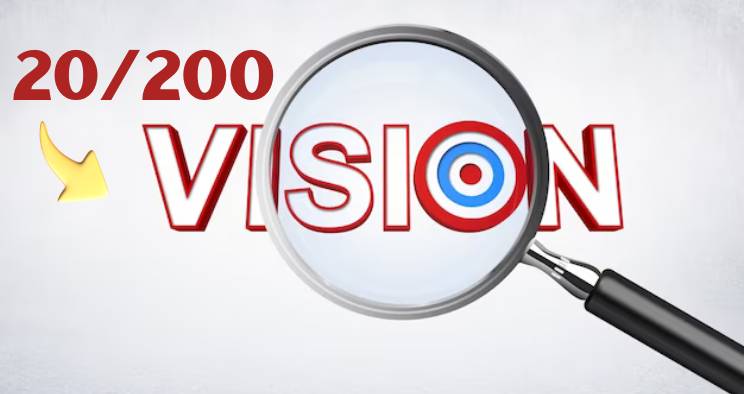Introduction to 20/200 Vision
Living with vision impairment can be challenging, and one common way to measure it is through the 20/200 vision scale. In this article, we will delve into the details of 20/200 vision, exploring its causes, effects, diagnosis, and treatment options.
20/200 Vision
The details about 20/200 vision are deeply explained in given below:
Measurement of 20/200 Vision
The 20/200 vision measurement signifies that a person can see at 20 feet what someone with normal vision can see at 200 feet. This level of visual impairment can significantly impact daily life, but it’s essential to understand that it doesn’t mean complete blindness.
Causes of 20/200 Vision
Vision impairment can result from various underlying conditions. Some of the common causes include age-related macular degeneration, diabetic retinopathy, glaucoma, and cataracts. Each of these conditions affects the eye in a unique way.
Symptoms and Effects of 20/200 Vision
Individuals with 20/200 vision often experience symptoms like blurry vision, difficulty reading, recognizing faces, and issues with depth perception. These symptoms can lead to reduced independence and a lower quality of life.
Diagnosis and Screening
Proper diagnosis of 20/200 vision requires a comprehensive eye exam. An eye care professional will perform various tests to determine the extent of visual impairment and its underlying cause.
Treatment Options for 20/200 Vision
While some causes of 20/200 vision are irreversible, there are treatment options available. These may include medication, surgery, or vision aids, depending on the specific condition.
Coping Strategies for Those with 20/200 Vision
Living with 20/200 vision can be challenging, but there are coping strategies to help individuals adapt and maintain their independence. These strategies often involve making adjustments to daily routines and utilizing assistive devices.
Examples of 20/200 vision
Here are examples of what people with 20/200 vision may experience:
- Not being able to see the street signs or traffic lights clearly while driving.
- Having difficulty reading the menu at a restaurant or the newspaper.
- Not being able to see their friends’ faces clearly when they are talking to them.
- Having difficulty seeing the ball or other objects when playing sports.
- Having difficulty navigating in unfamiliar places.
- Not being able to read the labels on food or medicine bottles.
- Having difficulty seeing the numbers on a clock or watch.
- Not being able to see the steps on a staircase clearly.
- Having difficulty seeing the TV or computer screen clearly.
- Not being able to see the whiteboard or projector screen clearly in school or work.
In addition to these everyday activities, people with 20/200 vision may also have difficulty with more specialized tasks, such as:
- Reading sheet music
- Playing a musical instrument
- Painting or drawing
- Doing detailed work, such as sewing or repairing electronics
- Driving in low-light conditions
It is important to note that everyone with 20/200 vision will experience it differently, depending on the cause of their vision loss and other factors, such as their age and overall health. Some people with 20/200 vision may be able to compensate for their vision loss by using adaptive devices or strategies, while others may find that their vision loss significantly impacts their daily lives.

